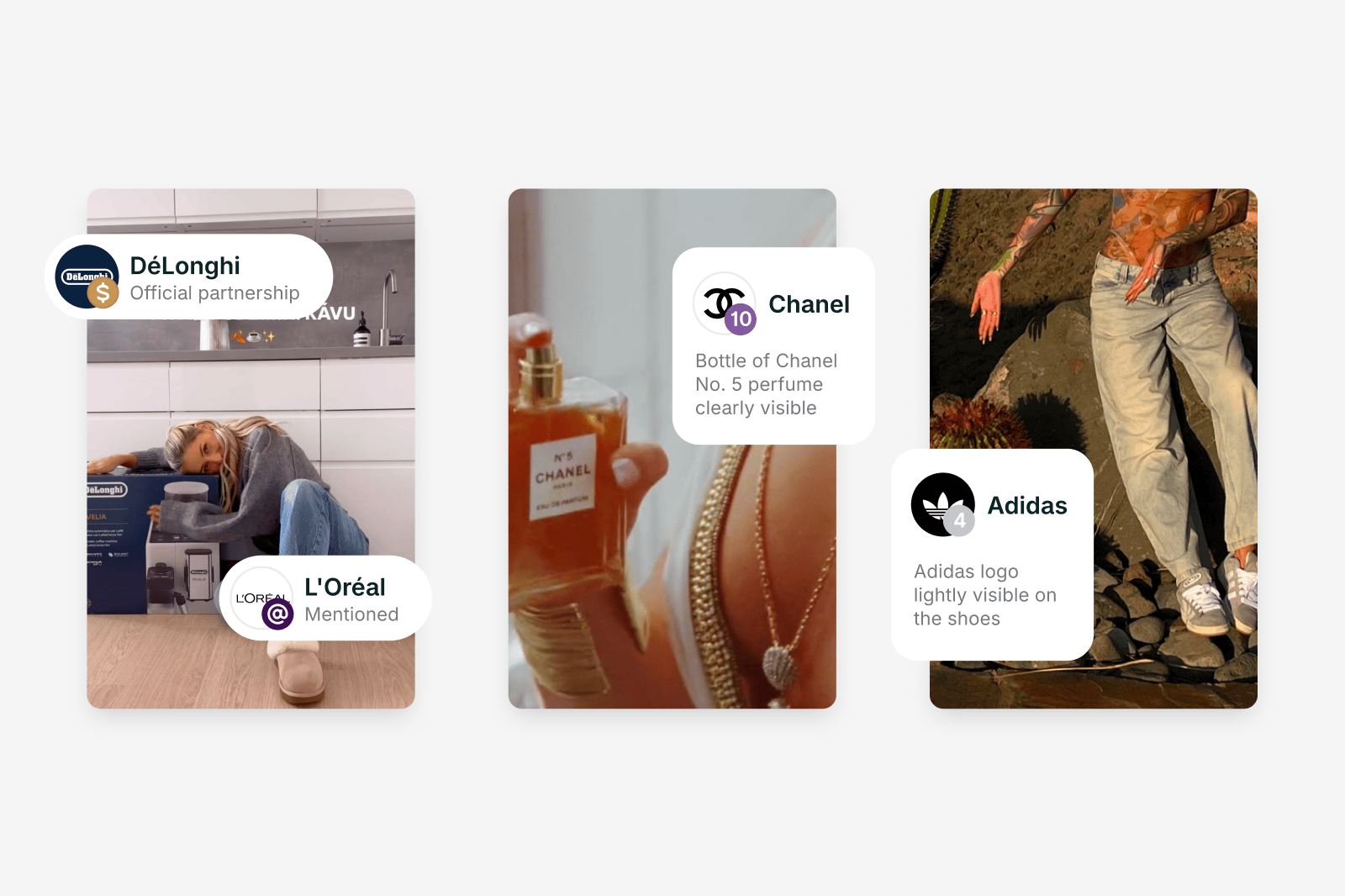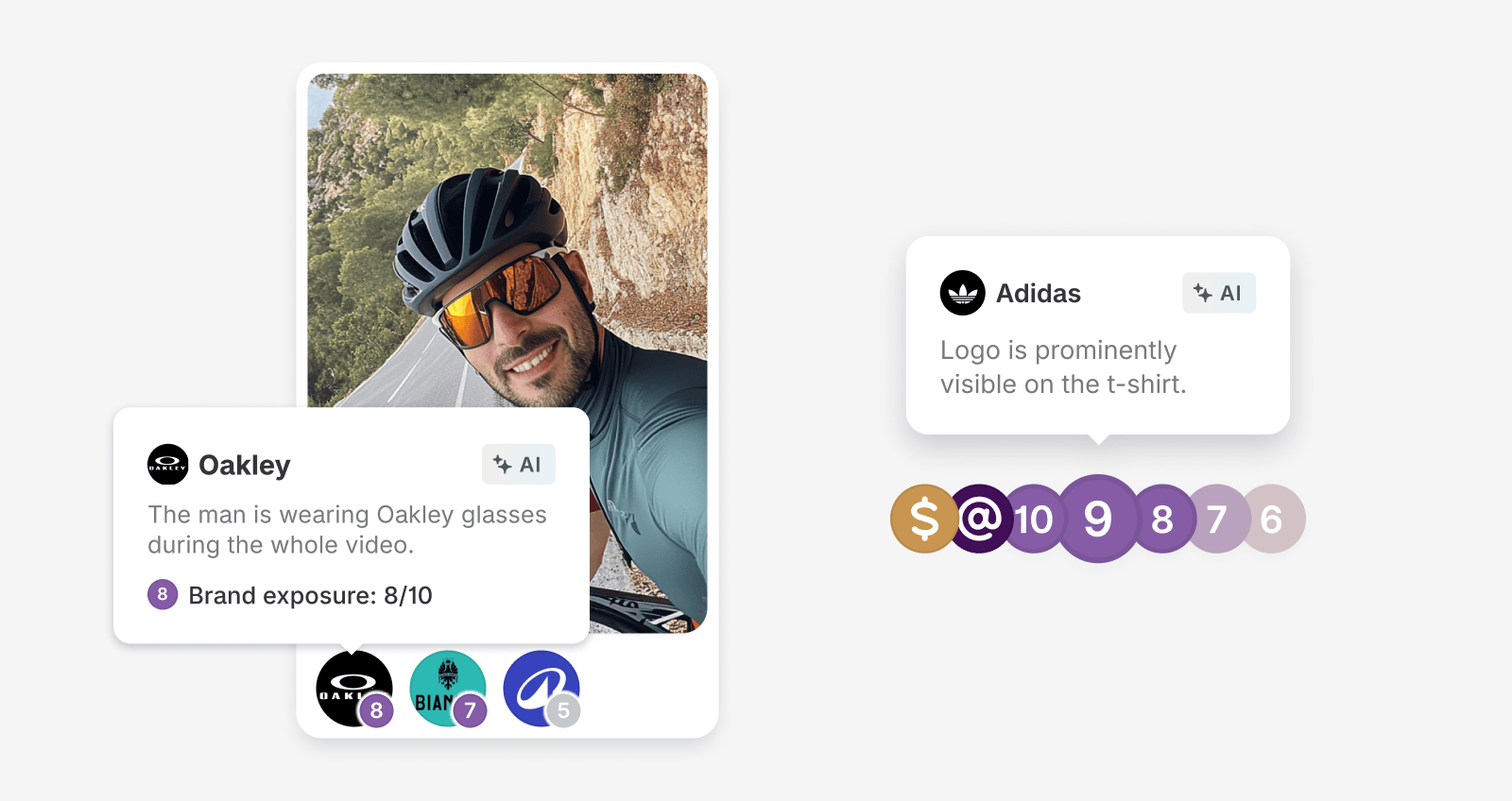Detect every single brand in every single piece of influencer content.

Contrary to social networks’ rules, most influencers don’t officially declare brand partnerships in their content. A lot of the time, they don’t even tag the brand’s account.
Sometimes, the promoted brand is skillfully hidden:
- The influencer might audibly mention the brand, but they don’t even show it
- A t-shirt with a logo might be visible for a split second in a video
- The influencer might have a promoted product on their desk
With Ravineo Influencer Analytics, you can now see exactly how brands and influencers are working together.

Brand Exposure
We measure brand exposure (how much the brand is present and visibile) with AI. Then, we visualize all brands on every piece of content with a visual tag.
Official partnerships easily stand out. For the rest, the AI assigns an exposure index (1–10).
- Official partnership: The influencer officially declared the post as paid partnership with the brand.
- Tagged brand: The influencer tagged the brand in the post, but didn’t declare it as a paid partnership.
- #Sponsored: The influencer tagged the brand’s profile and included a sponsorship-related hashtag such as #sponsored, #ad, or #partnership.
- Likely partnership: Brand exposure index is high (7–10). The brand is very strongly present (visually, audibly etc.). The influencer and brand might actually be working together.
- Unlikely partnership: Brand exposure index is low (1–6): The brand might be just lightly visible or in the background.
Ravineo & Meta Metrics Comparison
Metric | Ravineo | Meta (Facebook & Instagram) |
|---|---|---|
Reach Calculation | Cumulative Unique Reach: Sum of the unique reach for each individual ad. Captures the total exposure across multiple ads. | Deduplicated Unique Reach: Tracks the actual number of distinct individuals reached across multiple ads, eliminating duplicates. |
Example (10 Ads) | If 10 ads each reach 1M people, Ravineo reports a total reach of 10M. | Meta would show a deduplicated reach of, for example, 1.4M unique people across the 10 ads. |
Deduplication | No Deduplication: Summing up the unique reach of each ad provides a standardized comparison of total exposure. | Deduplication Applied: Meta deduplicates users across ads within their platform, removing repeat counts of the same individual. |
Share of Ads Voice | Represents the total attention captured by summing the reach of all ads. Gives a comprehensive view of campaign reach. | Focus on Unique Reach: Meta’s deduplication aims for exact precision within the Meta ecosystem, reporting the total unique exposure. |
Comparison Strength | Cross-platform, comprehensive: Share of Ads Voice works across multiple platforms, giving a full-market view. | Platform-limited: Meta’s reach data is specific to its ecosystem, limiting comparisons outside of Facebook/Instagram. |
Data Limitation | Cross-Ad Comparison Possible: Ravineo does not deduplicate across multiple ads due to privacy and technical constraints. | Single-Ad Focus: Meta focuses on deduplicating reach within individual campaigns but doesn’t offer comprehensive cross-platform views. |